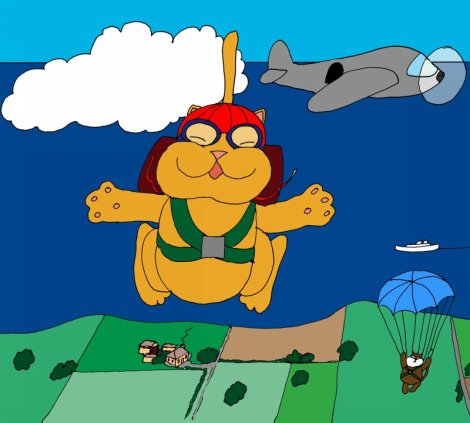 In 1950's The World Health Organisation (WHO) financed and supported the first ever team of over 14,000 parachuting cats into Borneo.
In 1950's The World Health Organisation (WHO) financed and supported the first ever team of over 14,000 parachuting cats into Borneo.
It was early in the 1950's, the Dayak people of Borneo tragically suffered an outbreak of malaria, spread by mosquitoes. The World Health Organisation (WHO), without thinking through all the consequences, liberally sprayed the area with DDT to kill the mosquitoes.
The mosquitoes died, malaria lessened and the people of Borneo were happy.
Then roofs started to collapse and the people of Borneo were sad. It appeared that a parasitic wasp had previously been keeping a thatch-eating caterpillar under control and the DDT killed the wasps, meaning the caterpillars were having a field day.
Tragically various poisoned insects were eaten by geckoes, which were eaten by cats and many cats died. The people of Borneo missed their cats greatly and asked WHO to help repair the damage it had done. WHO talked to some of their feline experts who proposed that 14,000 cats should sky dive into Borneo, in order to help the grieving residents, who longed to have their feline company once more. WHO also thought it might help with the massive outbreak of rats, which were spreading typhus and plague.
WHO initiated Operation Cat Drop and the cats started parachuting. The people of Borneo gained new feline friends, the rat population declined and the poeple of Borneo were happy once more.
As Rachel Wynberg and Christine Jardine, Biotechnology and Biodiversity: Key Policy Issues for South Africa, 2000 said:
"This is a graphic illustration of the interconnectedness of life, and of the fact that the root of problems often stems from their purported solutions."
We'd like to say a special thank you to each and every brave cat who parachuted into Borneo on that eventful day.
